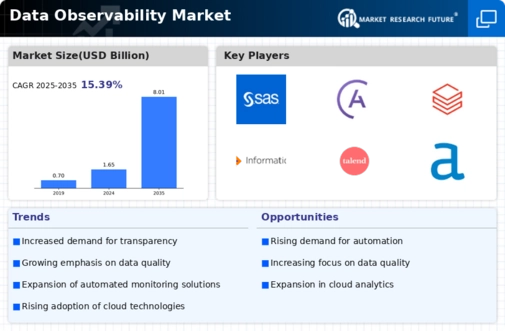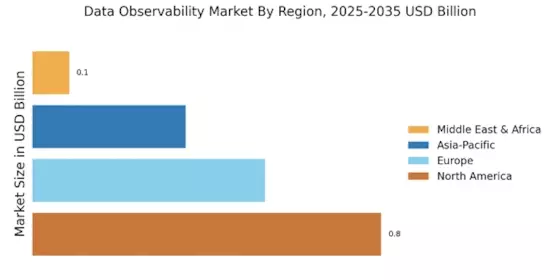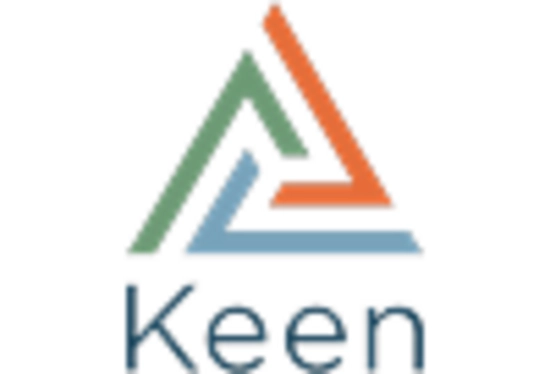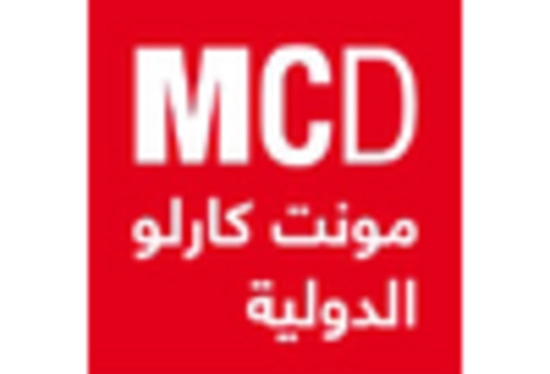Proliferation of Data Sources
The increasing number of data sources, including IoT devices, cloud applications, and social media platforms, drives the Data Observability Market. Organizations are generating vast amounts of data, which necessitates robust observability solutions to ensure data quality and reliability. According to recent estimates, the volume of data created globally is expected to reach 175 zettabytes by 2025. This surge in data generation compels businesses to adopt observability tools that can monitor, analyze, and visualize data flows effectively. As organizations strive to harness the value of their data, the demand for data observability solutions is likely to grow, enabling them to maintain data integrity and make informed decisions.
Adoption of Cloud Technologies
The widespread adoption of cloud technologies significantly influences the Data Observability Market. As organizations migrate their operations to the cloud, they encounter new challenges related to data visibility and management. Cloud environments often involve complex architectures that can obscure data flows and complicate monitoring efforts. Consequently, businesses are increasingly seeking observability solutions that can provide comprehensive insights into their cloud-based data ecosystems. The cloud services market is projected to grow to over 800 billion dollars by 2025, further driving the need for effective data observability tools. This trend suggests that organizations will prioritize observability solutions to ensure seamless data operations in cloud environments.
Emergence of Advanced Analytics
The rise of advanced analytics and data-driven decision-making is reshaping the Data Observability Market. Organizations are leveraging sophisticated analytics tools to extract insights from their data, which necessitates a strong foundation of data observability. Advanced analytics relies on high-quality, reliable data, and any discrepancies can undermine analytical outcomes. As businesses increasingly adopt predictive and prescriptive analytics, the demand for observability solutions that ensure data accuracy and consistency is likely to grow. The analytics market is projected to reach over 200 billion dollars by 2025, highlighting the potential for data observability tools to play a crucial role in supporting advanced analytics initiatives. This trend suggests that organizations will prioritize observability to enhance their analytical capabilities.
Increased Focus on Data Quality
As organizations recognize the critical role of data in decision-making, the emphasis on data quality intensifies within the Data Observability Market. Poor data quality can lead to erroneous insights and costly mistakes. Consequently, businesses are investing in observability tools that provide real-time monitoring and validation of data. Research indicates that organizations lose approximately 20 to 30% of revenue due to poor data quality. This realization drives the demand for data observability solutions that can proactively identify and rectify data issues, ensuring that stakeholders have access to accurate and reliable information. The focus on data quality is expected to propel the growth of the data observability market.
Regulatory Pressures and Compliance
The evolving landscape of data regulations and compliance requirements is a significant driver for the Data Observability Market. Organizations are compelled to adhere to various regulations, such as GDPR and CCPA, which mandate strict data governance practices. Non-compliance can result in severe penalties and reputational damage. As a result, businesses are increasingly investing in data observability solutions that facilitate compliance by providing visibility into data lineage and usage. The market for compliance-related technologies is expected to grow substantially, indicating a strong correlation between regulatory pressures and the demand for data observability tools. This trend underscores the necessity for organizations to implement robust observability frameworks to navigate the complex regulatory environment.


















Leave a Comment